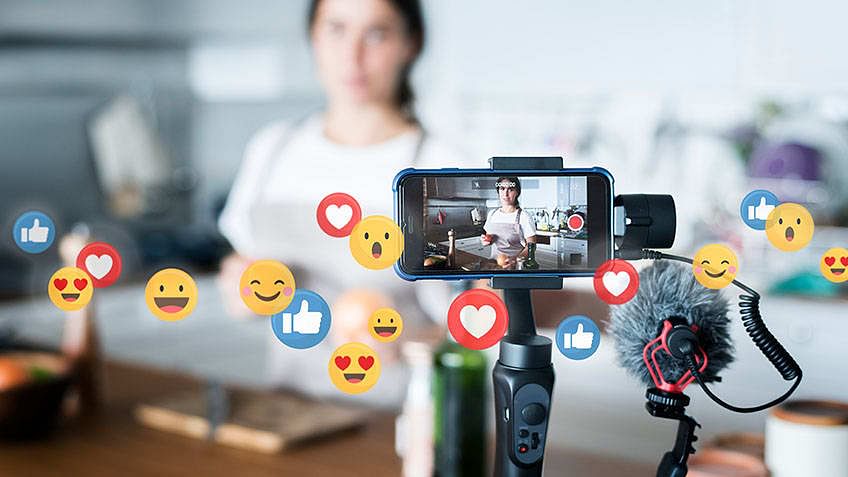Best Practices for Live Streaming on Social Media
Discover the best practices for live streaming on social media to engage your audience, increase interaction, and enhance your online presence.Live streaming on social media has become a powerful tool for businesses, influencers, and individuals looking to connect with their audience in real-time. It offers an unparalleled way to engage, interact, and build a community. However, to make the most of live streaming, it’s essential to understand the best practices that can help you create compelling and professional broadcasts. This article will guide you through the key strategies and techniques to ensure your live streams are effective and impactful.

Understanding the Basics of Live Streaming
The Importance of Live Streaming
Live streaming allows for real-time engagement, providing a unique opportunity to interact directly with your audience. This immediacy can build trust, foster loyalty, and drive higher engagement rates compared to pre-recorded videos.
Key Benefits:
- Real-Time Interaction: Engage with your audience through live comments and questions.
- Authenticity: Live streams feel more personal and authentic, building stronger connections.
- Immediate Feedback: Get instant feedback and adapt your content on the fly.
Choosing the Right Platform
Selecting the right social media platform for your live stream is crucial. Each platform has its unique features, audience demographics, and engagement styles.
Popular Platforms:
- Facebook Live: Ideal for reaching a broad audience and leveraging Facebook’s massive user base.
- Instagram Live: Great for engaging with a younger audience and utilizing Instagram’s visual-centric approach.
- YouTube Live: Perfect for longer, more in-depth content and reaching a global audience.
- Twitch: Best suited for gaming, creative content, and a highly interactive community.
- LinkedIn Live: Ideal for professional and business-related content.
Preparing for Your Live Stream
Pre-Stream Planning
Effective planning is essential to ensure a smooth live streaming experience. This includes defining your objectives, creating a content plan, and preparing all necessary equipment.
Key Steps:
- Define Your Goals: Understand what you aim to achieve with your live stream.
- Create an Outline: Plan the structure and flow of your broadcast.
- Schedule and Promote: Choose a date and time, and promote your live stream in advance.
Technical Preparation
Ensuring you have the right technical setup can significantly impact the quality of your live stream.
Essential Equipment:
- Camera: A good quality webcam or smartphone camera.
- Microphone: A reliable external microphone for clear audio.
- Lighting: Proper lighting setup to enhance video quality.
- Stable Internet Connection: A strong, stable internet connection to avoid disruptions.
Engaging Your Audience During the Live Stream
Interactive Elements
Incorporating interactive elements can keep your audience engaged and make your live stream more dynamic.
Engagement Tips:
- Live Q&A: Encourage viewers to ask questions and answer them in real-time.
- Polls and Surveys: Use platform features to create polls and surveys.
- Shoutouts: Acknowledge viewers by name and respond to their comments.
Content Delivery
How you deliver your content is just as important as the content itself. Focus on being engaging, energetic, and authentic.
Delivery Tips:
- Be Yourself: Authenticity resonates with viewers.
- Keep it Dynamic: Vary your tone and pace to maintain interest.
- Visual Aids: Use visuals like slides or graphics to enhance your presentation.
Technical Best Practices
Video and Audio Quality
High-quality video and audio are crucial for a professional live stream.
Quality Tips:
- Resolution: Stream in at least 720p for clear visuals.
- Framing: Ensure your camera is steady and frames you well.
- Audio Check: Test your microphone and avoid background noise.
Internet Connection
A stable internet connection is essential to avoid buffering and interruptions.
Connection Tips:
- Wired Connection: Use a wired connection for stability.
- Bandwidth: Ensure you have sufficient upload speed (at least 5 Mbps recommended).
- Backup Plan: Have a backup connection ready if possible.
Post-Stream Strategies
Analyzing Performance
Reviewing your live stream’s performance can provide valuable insights for future broadcasts.
Key Metrics:
- Viewership Numbers: Total views and peak concurrent viewers.
- Engagement Rates: Number of comments, likes, shares, and reactions.
- Audience Retention: How long viewers stayed engaged.
Repurposing Content
Repurposing your live stream content can extend its value and reach.
Repurposing Ideas:
- Highlight Clips: Create short highlight clips for social media.
- Full Replay: Upload the full replay on platforms like YouTube.
- Transcriptions: Convert the audio into a blog post or article.
Case Studies and Examples
Successful Live Stream Campaigns
Learning from successful live stream campaigns can provide inspiration and practical insights.
Case Study Examples:
- Red Bull’s Stratos Jump: A high-profile live event that captured global attention.
- Nike’s Product Launches: Utilizing live streams to unveil new products and engage with their audience.
Live streaming on social media is a powerful tool for real-time engagement and community building. By understanding the basics, preparing thoroughly, engaging your audience, maintaining high technical standards, and analyzing performance, you can create compelling and professional live streams that resonate with your audience. Embrace these best practices to enhance your live streaming strategy and make the most of this dynamic medium.